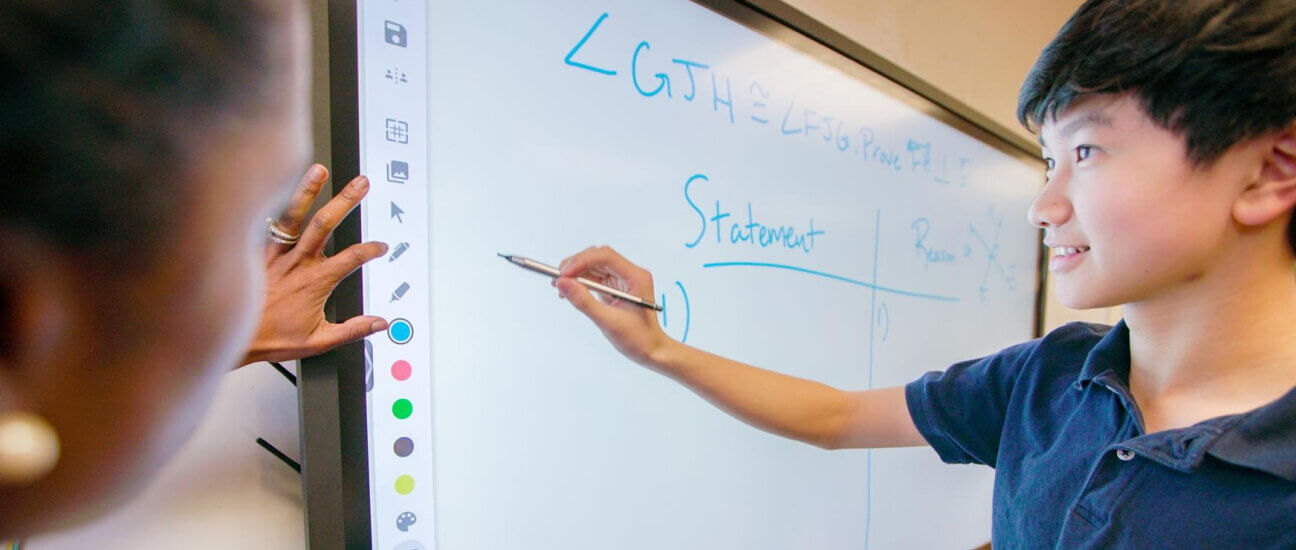Published on April 20th, 2022
Is there a limit to education technology?
5 minute read

As edtech continues to grow and reinforce its role in the classroom, find out when it’s most valuable and whether this will change in the future.
Edtech has vastly diversified the lesson activities educators are able to employ, as well as the learning outcomes they’re able to fulfill. What began as a single projector or whiteboard has evolved into technologies as small and intricate as Raspberry Pi, to those as vast and dynamic as an interactive display. Tools have also transitioned from being solely teacher-led to a range of student devices.
This growth has not only upgraded the student experience, but fundamentally revolutionized the way teaching and learning takes place. It’s opened up the boundaries of the classroom—whether transporting students with livestreamed field trips, or communicating in global online communities. It’s also enriched how lessons are delivered within the classroom, with more opportunities for collaboration, visualizations, and demonstrations.
Promethean’s Head of International Education Strategy, John Collick, interviewed renowned international futurist, Gerd Leonhard, about what an effective IT strategy looks like in the future of education—revealed in our full report. So when is edtech most valuable, and how is it set to grow?
“The only limitation of technology is us saying that enough is enough.”
– Gerd Leonhard
What’s the potential of edtech?
With educators always seeking to future-proof their pedagogy, edtech opens up their opportunities to maintain modern lesson formats. Devices, apps, and online platforms can be chosen to complement different school goals and learning outcomes. Similarly, educators are able to cater for differentiated learning and mixed-ability students by appealing with a broader range of activities.
Without an IT strategy which embeds edtech into the future of the classroom, therefore, staff and students won’t benefit from this improved engagement. Edtech’s potential will continue tapping into each generation’s digital nativity, so approaches which neglect it will fall behind and become increasingly outdated.
Even more fundamental in enabling this, however, is global tech access. There remain many communities worldwide which lack the necessary tech infrastructure. Governments will need to commit to investment to ensure students aren’t disadvantaged and edtech’s upgradeability isn’t hindered. Edtech can elevate this connectivity once in place, bridging relationships within and between even the most remote communities.
Find out the role this will play in the full predictions report.
What’s the purpose of edtech?
It might seem easy to be carried away by the scale of this vision for edtech’s potential, but it doesn’t require high-tech innovations. There’s always been a risk of being distracted by the allure of impressive-looking, but ultimately less purposeful, edtech solutions. It’s most important that edtech is designed to meet clear, concrete staff and student needs—priorities like social-emotional learning and improving attainment. For school leaders with tightening budgets, this affects whether return on investment is maximized.
In terms of day-to-day management, edtech needs to present ease-of-use for the teachers using it and the IT administrators overseeing it. As well as not burdening them, it should supplement the teacher rather than replace them. These have always been the essential determiners of effective edtech, but more is being expected of it as schools face new pressures and objectives. In the digitally rich future of education, it’ll be for us to govern whether edtech is supporting the human skills and qualities to complement it. Fulfill that, and edtech will remain endlessly upgradeable.
Up next: How can educators cater for future careers?
Previously: The role of the teacher in the future of education.




